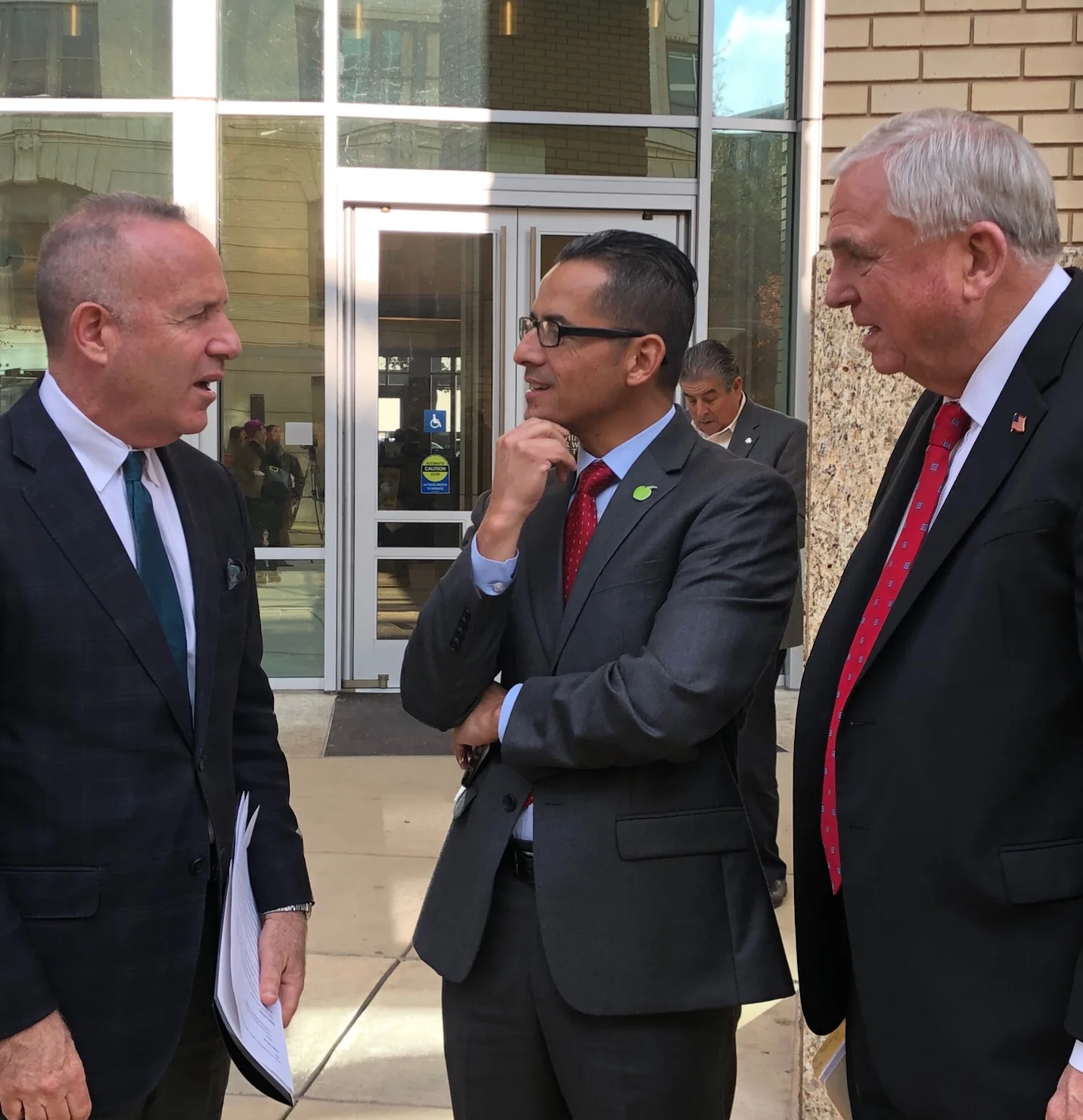Council signals support for Mayor's $40-million plan to address homelessness in Sacramento
Mayor Darrell Steinberg talks to a resident at the city’s Triage Shelter on Railroad Drive.
The Sacramento City Council Tuesday signaled support of Mayor Darrell Steinberg’s $40-million proposal to address Sacramento’s crisis of homelessness over the next two years.
While no formal vote on the plan was scheduled, most Councilmembers spoke in support. Mayor Steinberg said the next step will likely be individual shelter proposals coming before the Council for approval.
Nearly $16 million to pay for the plan would come from one-time funds from the current Measure U, with the balance expected to come from state and private contributions. The Council voted earlier this month to set aside $15.7 million to address homelessness over two years.
Councilmember Jeff Harris said the city’s increased financial commitment to addressing homelessness must be considered in the context of the cost of doing nothing. In 2015, a city report concluded that the city spent $13.6 million in a single year to mitigate the effects of homelessness, including $5 million by the Fire Department and $2 by the Police Department.
“When you consider that we’re spending $14 million a year spinning our wheels you’ll understand we’ll have back end savings,” Harris said.
The plan focuses on creating about 800 new shelter beds throughout the city, largely from opening more emergency triage shelters like the one that the city has run for more than year on Railroad Drive in north Sacramento. Low-barrier shelters accept people with their partners, pets and possessions and surround them with health care and other services to help them stabilize their lives and transition into permanent housing.
Triage shelters also offer food and services on site, and include increased security and cleanup for the surrounding neighborhoods. They focus on housing people who are already homeless in the existing neighborhood. They are not walk-in shelters. Residents are referred, usually by the Sacramento Police Impact Team.
“Without triage shelters you can’t get people from the riverbank and the streets into that permanent housing,” said Mayor Steinberg, who was also appointed Tuesday by Gov. Gavin Newsom to lead a statewide Commission on Homelessness and Supportive Housing.
The mayor stressed that he doesn’t believe people have a civil right to sleep on the streets, but added, “Until we have the ability to offer people a bed, we have a lesser standing to enforce the law. And when we enforce the law, what are we doing? We’re just moving people form one place to another.”
The plan, presented by City Homeless Services Coordinator Emily Halcon, envisions five new triage shelters opening over the next two years throughout the city – a reflection of the mayor’s call for each council member to find a place for 100 shelter beds in their districts. The plan also envisions repurposing three traditional shelters, a youth shelter and a shelter for women and children.
More than 500 people have exited the Triage Shelter on Railroad Drive since it opened in December 2017, with 37 percent moving on to permanent or transitional housing. The Triage Shelter serves a population that is older, sicker and has been on the streets longer than the homeless population as a whole.
“Even when we look at the nature of the people we are helping, railroad is exiting more people to permanent housing than traditional shelters,” Halcon said.
Andy Hernandez of the Woodlake Neighborhood Association said he was initially apprehensive about what effect the Railroad Drive shelter would have on the surrounding neighborhood, but has become convinced it’s the right approach.
“The people who are in Railroad are the people who were just not reachable.” Hernandez said. “I want to see this expanded. I’m hoping to see this (plan) built out as quickly as it possibly can. Whatever we can do is what we should do.”
Only two sites for new triage shelters have been publicly identified so far. Councilmember Jay Schenirer is seeking approval from the Sacramento Regional Transit agency to build a shelter on an underused portion of its parking lot next to the Florin Road light rail station. Councilmember Jeff Harris is working with Cal Expo to locate a shelter on a piece of property it owns.
Mayor Steinberg’s plan includes funds for increased clean up and security around new shelters, plus an average of six months of rental assistance to help people move to permanent housing.
The plan does not include funding beyond the two-year period. City staff estimates that it will cost about $18 million annually to continue operating the new shelters after that point. Mayor Steinberg stressed that additional state resources will likely come. Gov. Gavin Newsom included $500 million for increasing shelter capacity around the state in his January budget.
“The state intends to be a long-term partner on this endeavor,” Mayor Steinberg said.





